PYGMY CORY CORYDORAS TROPICAL FISH CATFISH, Stunning Addition to Your Home Aquarium – Perfect for First-Time Fish Keepers Seeking Thriving Community Members, Easy Care Freshwater Fish for Beginners
£3.49 Original price was: £3.49.£2.91Current price is: £2.91.
Welcome these beautiful Pygmy Cory (Corydoras pygmaeus) to your community aquarium! Their stunning appearance and graceful movements make them ideal tropical fish for beginners. Perfect companions for peaceful aquariums, they thrive in well-maintained environments, adding vibrant life to your tank.
850 in stock
Species Introduction
The Pygmy Cory (Corydoras pygmaeus) is a delightful addition to any freshwater aquarium, particularly for those who welcome these beautiful creatures into their homes. These small catfish are native to the slow-moving waters of the Amazon Basin in South America, where they inhabit shallow streams and rivers, often found among leaf litter and sandy substrates. Their natural habitat is characterized by a warm, soft, and slightly acidic environment, which is crucial for their well-being.
Pygmy Corys are known for their peaceful demeanor and social behavior, making them ideal companions in a community tank setting. They typically grow to a maximum length of about 1.5 inches, allowing them to thrive in smaller spaces while still requiring ample room to swim and explore. Their charming appearance, characterized by a mottled pattern of browns and whites, adds a touch of elegance to any aquarium setup.
Care Requirements Dashboard
| Optimal Living Conditions | |
|---|---|
| Water Temperature | 22-28°C (72-82°F) |
| pH Level | 6.0-7.5 |
| Water Hardness | 2-15 dKH |
| Minimum Tank Size | 120L (30 gal) |
| Salinity | Freshwater |
| Care Level | Beginner to Intermediate |
Natural Behavior & Temperament
Pygmy Corys are known for their sociable and peaceful behavior, making them a fantastic choice for community tanks. They are schooling fish that thrive in groups of at least six individuals, which helps to reduce stress and promote natural behaviors. In the aquarium, you will often observe them swimming together, foraging for food, and engaging in playful interactions. Their natural instinct is to scavenge the substrate for detritus and leftover food, which makes them excellent cleaners in a community setup.
Their gentle disposition allows them to coexist harmoniously with a variety of other peaceful freshwater fish, contributing to a lively and dynamic aquarium environment. However, it is essential to avoid housing them with aggressive or overly large fish that may see them as prey.
Tank Setup Guide
Setting up a suitable environment for your Pygmy Corys is crucial for their health and happiness. A well-planned tank setup should include a soft substrate, such as fine sand or smooth gravel, to allow these bottom dwellers to forage comfortably. Incorporating plenty of hiding spots and decorations, such as driftwood, rocks, and aquatic plants, will not only enhance the aesthetic appeal of your aquarium but also provide essential shelter for your fish.
Live plants, in particular, can help to mimic their natural habitat and improve water quality by absorbing nitrates and providing oxygen. When arranging your tank, ensure that there are open swimming spaces while also allowing for plenty of cover, as this will help your Pygmy Corys feel secure and reduce stress. Additionally, consider using a gentle filter to maintain water quality without creating strong currents that may disturb these delicate fish.
Water Quality Management
Important Water Parameter Notice
Maintain stable pH levels between 6.0 and 7.5.
Regular water changes are essential for maintaining good water quality.
Maintaining optimal water quality is vital for the health of your Pygmy Corys. Regular water changes of 20-30% weekly will help to remove toxins and replenish essential minerals. It is crucial to monitor the pH levels regularly, as fluctuations can stress these fish. Ideally, aim for a pH between 6.0 and 7.5, with a hardness level of 2-15 dGH. The water temperature should be kept stable between 72-78°F (22-26°C). Utilizing a high-quality water testing kit will help you keep track of these parameters, ensuring a safe and healthy environment for your aquatic companions.
Feeding & Nutrition
Pygmy Corys are omnivorous scavengers, which means they thrive on a varied diet that includes high-quality sinking pellets, flakes, and frozen or live foods. A balanced diet is essential for their growth, health, and vibrant coloration. It is recommended to feed them small amounts two to three times a day, ensuring that they consume all the food within a few minutes to prevent water quality issues.
Sinking pellets designed for bottom feeders are particularly beneficial, as they cater to their natural foraging behavior. Additionally, supplementing their diet with occasional treats such as bloodworms, brine shrimp, or daphnia can enhance their nutritional intake and stimulate natural hunting instincts. Always ensure that any food provided is appropriate for their size and dietary needs, as overfeeding can lead to health problems and deteriorate water quality.
Compatibility Guide
Ideal Tank Mates
- Neon Tetras
- Guppies
- Rasboras
- Other Corydoras species
- Small peaceful shrimp
When considering tank mates for your Pygmy Corys, it is essential to choose peaceful species that will not pose a threat to their well-being. Ideal companions include small schooling fish such as Neon Tetras, Guppies, and Rasboras, which share similar water parameter requirements and social behaviors. Other Corydoras species can also coexist harmoniously with Pygmy Corys, creating a lively and dynamic community. Additionally, small peaceful shrimp, such as Cherry Shrimp or Amano Shrimp, can thrive alongside these catfish, as they occupy different niches within the aquarium. It is crucial to avoid housing them with aggressive or larger fish that may see them as prey, as this can lead to stress and potential harm.
Health & Wellness
Maintaining the health and wellness of your Pygmy Corys requires regular monitoring and proactive care. Common health issues include ich, fin rot, and bacterial infections, often resulting from poor water quality or stress. To prevent these issues, ensure that your aquarium is properly cycled, and perform regular water changes to maintain clean and stable conditions.
Observing your fish for signs of distress, such as lack of appetite, abnormal swimming patterns, or visible lesions, is essential for early detection of potential health problems. In the event of an outbreak, it is crucial to act swiftly by isolating affected fish and treating the aquarium with appropriate medications. Additionally, providing a stress-free environment with plenty of hiding spots and stable water parameters will contribute to the overall well-being of your Pygmy Corys.
Breeding Information
Breeding Pygmy Corys can be a rewarding experience for aquarists interested in expanding their community tank. To encourage breeding, it is recommended to keep a group of at least six individuals, as this will promote natural courtship behaviors. Providing a separate breeding tank with soft, slightly acidic water and plenty of fine-leaved plants or spawning mops can facilitate the process.
When the female is ready to spawn, she will lay eggs on the substrate or on plant leaves, which the male will fertilize. After spawning, it is advisable to remove the adults from the breeding tank to prevent them from eating the eggs. The eggs typically hatch within 3-5 days, and the fry can be fed infusoria or finely crushed flakes until they are large enough to consume regular food. Providing optimal care for the fry during their early stages is crucial for their survival and growth.
Acclimation Process
Acclimating your Pygmy Corys to a new aquarium environment is a critical step in ensuring their health and comfort. When introducing these fish to your tank, it is essential to take your time and follow a gradual acclimation process. Start by floating the sealed bag containing the fish in the aquarium for about 15-20 minutes to equalize the temperature. After this, slowly add small amounts of tank water to the bag every 5-10 minutes, allowing the fish to adjust to the new water parameters gradually.
This process should take about an hour or more, depending on the differences in water chemistry. Once acclimated, gently release the fish into the aquarium using a net to avoid introducing any transport water that may contain harmful substances. Monitoring the fish closely for any signs of stress or illness during the first few days in their new home is essential for their successful transition.
Long-term Care
Caring for Pygmy Corys over the long term involves providing a stable and nurturing environment that meets their needs throughout their lifespan, which can be up to 5 years or more with proper care. Regular maintenance of the aquarium, including water changes, substrate cleaning, and equipment checks, is vital to ensure a healthy habitat. Monitoring their behavior and health is essential, as any changes may indicate underlying issues that require attention.
Additionally, maintaining a balanced diet and providing enrichment through tank mates and environmental structures will contribute to their overall happiness and longevity. By focusing on their welfare and creating a thriving community, you will enjoy the beauty and charm of these delightful fish for years to come.
Natural Habitat Recreation
Recreating the natural habitat of Pygmy Corys in your aquarium can enhance their well-being and encourage natural behaviors. To achieve this, consider incorporating elements that mimic the Amazon Basin’s environment, such as soft, sandy substrates and plenty of hiding spots. Utilizing driftwood, rocks, and live plants will not only provide shelter but also contribute to the overall aesthetics of the tank.
The addition of floating plants can create shaded areas that help replicate their natural habitat, while also improving water quality through natural filtration. Ensuring that the aquarium is well-planted and offers various levels of cover will allow your Pygmy Corys to feel secure and thrive in their environment.
Seasonal Care Adjustments
As seasons change, it is essential to adjust your care routine for Pygmy Corys to accommodate fluctuations in temperature and light. During warmer months, ensure that the water temperature remains within the ideal range of 72-78°F (22-26°C) by using fans or air conditioning if necessary. Additionally, increasing the frequency of water changes may be beneficial during hot weather to maintain optimal water quality.
In the cooler months, consider using a heater to keep the water temperature stable, as rapid fluctuations can stress these fish. Adjusting the lighting schedule to mimic natural day lengths can also help regulate their behavior and promote a healthy environment. By being attentive to seasonal changes, you can ensure that your Pygmy Corys remain healthy and comfortable year-round.
Expert Tips
For those looking to provide the best care for their Pygmy Corys, consider these expert tips to enhance their living conditions and overall well-being. First, always maintain a stable environment by regularly monitoring water parameters and making adjustments as needed. Additionally, providing a varied diet will not only promote health but also stimulate natural behaviors.
Incorporating a mix of high-quality pellets, flakes, and live or frozen foods will ensure a balanced nutritional intake. Lastly, observe your fish regularly for any signs of stress or illness, as early intervention can make a significant difference in their health. By following these tips and prioritizing their care, you can create a thriving community aquarium that showcases the beauty of these delightful fish.
Troubleshooting
In the event of issues arising in your aquarium, it is essential to have a troubleshooting plan in place to address potential problems quickly. Common challenges with Pygmy Corys may include stress from aggressive tank mates, poor water quality, or dietary deficiencies. If you notice signs of stress, such as hiding more than usual or changes in appetite, assess the tank environment and make necessary adjustments.
Ensure that water parameters are within the recommended ranges and consider re-evaluating tank mates to ensure compatibility. If health issues arise, such as signs of disease or lethargy, isolate affected fish and treat the aquarium with appropriate medications. Regular maintenance and monitoring will help prevent many issues before they become serious, allowing your Pygmy Corys to thrive.
Scientific Background
The Pygmy Cory (Corydoras pygmaeus) belongs to the family Callichthyidae, which encompasses a diverse group of catfish known for their armored bodies and unique adaptations to their freshwater habitats. These fish are characterized by their small size, with a maximum length of about 1.5 inches, and their distinctive patterns that provide excellent camouflage among the leaf litter of their natural environment.
Research into the behavior and ecology of Corydoras species has revealed their importance in maintaining the health of freshwater ecosystems, as they play a vital role in nutrient cycling and detritus breakdown. Understanding their natural history and biological needs is essential for successful care and breeding in captivity. By fostering a deeper appreciation for these remarkable creatures, aquarists can contribute to their conservation and well-being.
Advanced Care Techniques
For experienced aquarists looking to elevate their care for Pygmy Corys, consider implementing advanced techniques to enhance their environment and overall health. Utilizing a well-planted aquarium with a variety of aquatic flora can improve water quality and provide natural foraging opportunities.
Additionally, experimenting with different food types, such as live or frozen options, can stimulate natural behaviors and promote optimal health. Implementing a breeding program can also be a rewarding endeavor, allowing you to observe the fascinating reproductive behaviors of these fish. By staying informed about the latest research and best practices in aquaculture, you can ensure that your Pygmy Corys receive the highest level of care, contributing to their longevity and happiness in your aquarium.
Frequently Asked Questions
Q: What tank size is required for Pygmy Corydoras?
Pygmy Corydoras thrive in a tank size of at least 60 litres (15 gallons). This allows ample space for them to swim and explore. A larger tank is preferable as it helps maintain stable water parameters, which is essential for their health. Aquatic companions such as these are social creatures and should ideally be kept in groups of six or more. This not only promotes their natural behaviour but also reduces stress. Remember to provide hiding spots and plants to mimic their natural habitat, which is typically a densely vegetated riverbed in South America.
✓ Expert Tip
Utilising a tank with a sandy substrate will enhance the comfort of Pygmy Corydoras, as they enjoy foraging through the substrate.
Q: What water parameters do Pygmy Corydoras require?
Pygmy Corydoras prefer slightly acidic to neutral water conditions, with a pH range of 6.0 to 7.5. The water hardness should be between 2-15 dGH. Maintaining a stable temperature between 22-26°C (72-79°F) is crucial. Regular water changes, approximately 25% weekly, help keep ammonia and nitrite levels at zero, ensuring a healthy environment. Using a quality water conditioner is advisable to remove harmful chemicals from tap water. Always monitor water parameters with reliable test kits to ensure optimal conditions for your aquatic companions.
✓ Expert Tip
Utilising a sponge filter will not only help maintain water quality but also provide gentle water movement suitable for these small fish.
Q: How often should I feed Pygmy Corydoras?
Pygmy Corydoras should be fed small amounts 2-3 times per day. A varied diet is essential for their health, including high-quality sinking pellets, frozen or live foods like brine shrimp and daphnia, and vegetable matter such as blanched courgette or spinach. Overfeeding can lead to poor water quality, so ensure that all food is consumed within a few minutes. Providing a mix of foods will enhance their colouration and overall vitality. Observe their feeding habits; they are more active during feeding times, which is a good indicator of their health.
✓ Expert Tip
Consider using a feeding ring to keep food in a designated area, making it easier for your Pygmy Corydoras to access their meals.
Q: What are the best tank mates for Pygmy Corydoras?
Pygmy Corydoras are peaceful and sociable fish, making them excellent companions for community tanks. Suitable tank mates include small tetras, rasboras, and other small, non-aggressive species. Avoid larger or aggressive fish, as they may intimidate or harm these delicate creatures. Additionally, ensure that all fish share similar water parameter needs to maintain a harmonious environment. A well-planned community tank can create a vibrant aquatic ecosystem, benefiting all inhabitants.
✓ Expert Tip
Incorporating plants and decorations that provide hiding spots will help reduce stress for your Pygmy Corydoras and enhance their natural behaviour.
Q: How do I properly acclimatise Pygmy Corydoras to my aquarium?
Acclimatising Pygmy Corydoras is crucial to ensure their health and reduce stress. Begin by floating the sealed bag in your aquarium for about 15-20 minutes to equalise the temperature. After this, gradually introduce small amounts of aquarium water into the bag over the next hour. This process helps them adjust to the new water parameters. Finally, gently release them into the tank using a net to avoid introducing any transport water. Avoid adding the bag water directly into the aquarium, as it may contain harmful substances.
✓ Expert Tip
Monitor their behaviour closely for the first few days, as signs of stress may indicate that further adjustments are needed.
Q: What are the signs of healthy Pygmy Corydoras?
Healthy Pygmy Corydoras are active swimmers and display vibrant colours. Their fins should be fully extended without any signs of fraying or clamping. Observe their behaviour; they should interact with tank mates and forage on the substrate. A healthy fish will also have clear eyes and no visible signs of lesions or abnormalities. Regular monitoring of their feeding habits is essential; they should eagerly accept food. If you notice lethargy, loss of appetite, or unusual swimming patterns, it may indicate stress or illness, requiring immediate attention.
✓ Expert Tip
Maintaining stable water conditions is key to preventing health issues, so regular testing and water changes are crucial.
Q: How do I successfully breed Pygmy Corydoras?
Breeding Pygmy Corydoras requires a separate breeding tank with soft, slightly acidic water and a spawning mop or fine-leaved plants. To encourage breeding, maintain a temperature of around 24°C (75°F) and perform partial water changes to simulate rain, which stimulates spawning behaviour. Once the female lays eggs, remove the adults to prevent them from eating the eggs. The eggs will hatch in 3-5 days, depending on water temperature. Feed the fry with infusoria or powdered food until they are large enough to consume small flakes.
✓ Expert Tip
Ensure to provide ample hiding spots for the fry, as this helps reduce stress and predation risk.
Q: What temperature should I maintain for Pygmy Corydoras?
Pygmy Corydoras thrive in a temperature range of 22-26°C (72-79°F). Maintaining a stable temperature is crucial as fluctuations can lead to stress and health problems. It is advisable to use a reliable aquarium heater with a thermostat to achieve this. Regularly check the temperature with an accurate thermometer to ensure it remains consistent. If your home experiences temperature changes, consider insulating the tank or placing it in a more stable environment to provide optimal conditions for your aquatic companions.
✓ Expert Tip
Utilising a heater with a built-in thermostat can help maintain stable temperatures, preventing sudden changes that could stress your fish.
Q: How long do Pygmy Corydoras typically live in captivity?
Pygmy Corydoras can live up to 5 years in captivity with proper care. Providing a well-maintained aquarium, optimal water conditions, and a balanced diet significantly contributes to their longevity. Regular water changes and monitoring water parameters are essential to prevent stress and disease. Additionally, keeping them in groups and providing a stress-free environment can enhance their quality of life. Observing their behaviour regularly will help you catch any potential health issues early, allowing for timely intervention.
✓ Expert Tip
Keeping a consistent routine for feeding and tank maintenance can greatly enhance their lifespan.
Q: What type of substrate is most suitable for Pygmy Corydoras?
Pygmy Corydoras prefer a soft, sandy substrate that mimics their natural habitat. This allows them to forage comfortably without risking injury to their delicate barbels. Avoid sharp gravel or coarse substrates, as these can cause harm. A layer of 2-3 cm of fine sand is ideal, providing a safe environment for them to dig and explore. Additionally, incorporating smooth stones and driftwood will enhance the aesthetic of the aquarium while providing hiding spots for your fish.
✓ Expert Tip
Rinsing the substrate before adding it to the tank will remove any dust and impurities, ensuring a cleaner environment for your fish.
Q: What behavioural patterns should I expect from Pygmy Corydoras?
Pygmy Corydoras are known for their playful and social behaviour. They tend to swim in groups, often seen foraging on the substrate for food. Their natural curiosity leads them to explore their surroundings, and they enjoy interacting with their tank mates. These fish are generally peaceful and tend to avoid confrontation. However, they can become shy if stressed or kept in insufficient numbers. Providing plenty of hiding spots and maintaining a calm environment will encourage their natural behaviours and help them thrive.
✓ Expert Tip
Observing their interactions can provide insight into their health and happiness; active behaviour is a good sign.
Q: How can I prevent common diseases in Pygmy Corydoras?
Preventing diseases in Pygmy Corydoras involves maintaining optimal water quality and a stable environment. Regular water changes and testing are crucial to keep ammonia and nitrite levels at zero. Quarantining new fish before introducing them to the main tank can prevent the spread of diseases. Additionally, providing a balanced diet and avoiding overfeeding will strengthen their immune system. Keeping the aquarium clean and ensuring adequate filtration will also help prevent disease outbreaks.
✓ Expert Tip
Regularly inspect your fish for signs of illness, such as changes in behaviour or appearance, to address any issues promptly.
Q: What lighting conditions do Pygmy Corydoras prefer?
Pygmy Corydoras thrive in moderate lighting. They prefer environments that mimic their natural habitat, which typically features dappled light filtering through vegetation. A mix of natural and artificial light is beneficial; however, avoid bright, harsh lighting that can stress them. Providing shaded areas using plants or decorations helps create a comfortable environment. A light cycle of 10-12 hours is recommended to support plant growth and maintain a healthy ecosystem in the aquarium.
✓ Expert Tip
Using a dimmable LED light can help you adjust the brightness according to the needs of your fish and plants.
Q: How do I recognise stress in Pygmy Corydoras?
Recognising stress in Pygmy Corydoras involves observing their behaviour and physical appearance. Signs of stress include hiding excessively, lethargy, and loss of appetite. Additionally, if they display erratic swimming patterns or clamped fins, it may indicate discomfort. Changes in colouration, such as fading or darkening, can also signal stress. Maintaining stable water conditions, providing ample hiding spots, and ensuring compatible tank mates will help minimise stress and promote a healthy environment for your aquatic companions.
✓ Expert Tip
Regularly monitor your fish’s behaviour; prompt action can prevent minor stress from escalating into serious health issues.
Q: What natural habitat conditions should I replicate for Pygmy Corydoras?
To successfully replicate the natural habitat of Pygmy Corydoras, aim for a soft, sandy substrate with plenty of hiding spots provided by plants and driftwood. They originate from slow-moving rivers in South America, so creating gentle water flow is essential. Incorporating live plants will not only enhance aesthetics but also provide cover and help maintain water quality. Aim for slightly acidic to neutral water conditions, and ensure the temperature remains stable within their preferred range. Regular maintenance will help mimic the clean, well-oxygenated waters they thrive in.
✓ Expert Tip
Utilising natural materials such as driftwood and rocks can help create a more authentic environment for your fish friends.

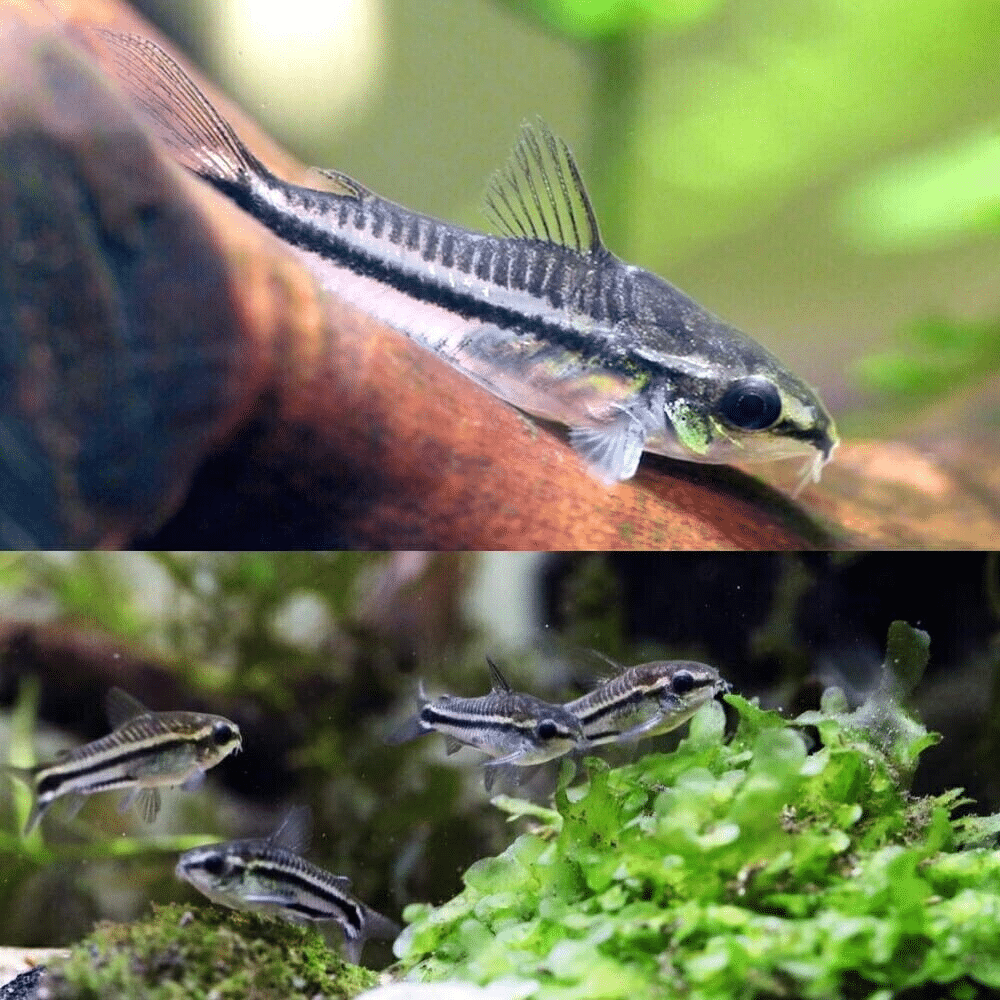
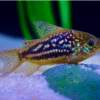


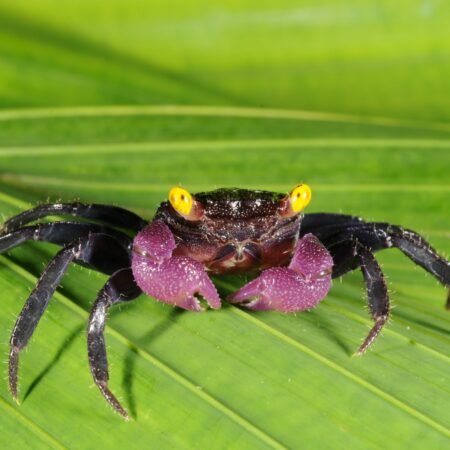

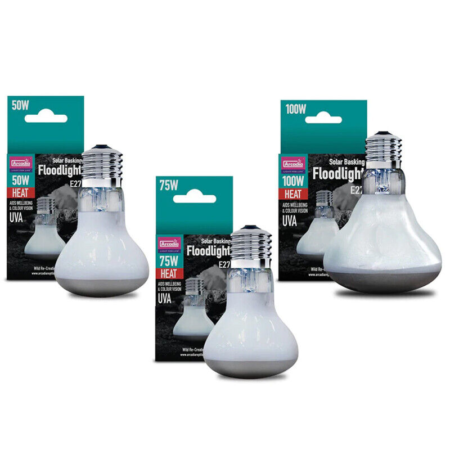

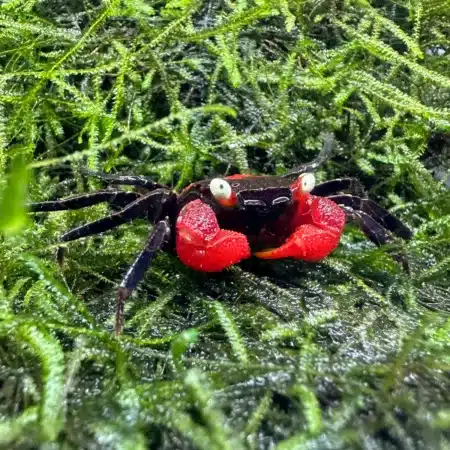
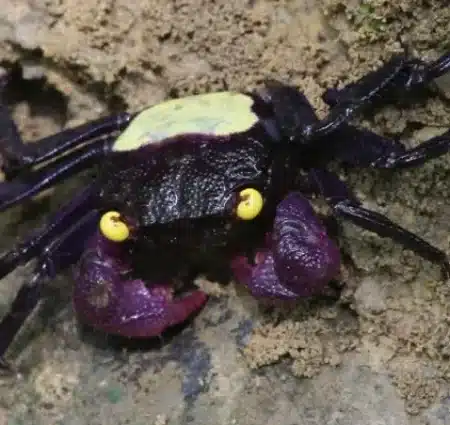


Emily Carter (verified owner) –
I’ve been keeping fish for years, and I recently added Pygmy Corydoras to my community tank, and they have completely stolen my heart! These little catfish are not only cute with their tiny size, but they also bring such a lively energy to the aquarium. After about two months of observing them, I can confidently say they thrive in a well-planted setup, and they work wonders with algae control! They are social creatures, so I recommend keeping them in groups of at least six to see their playful behavior shine.
Compared to other catfish I’ve tried, these little guys are more active and friendly, which makes them a joy to watch during feeding time. They dart around and sift through the substrate, which keeps the tank clean and lively! I did notice they prefer soft, sandy substrate over gravel, so if you’re transitioning, keep that in mind.
Shipping was prompt, and they arrived in perfect condition, which is crucial for me as a caring fish parent. If you’re looking for a peaceful addition to your aquarium, I cannot recommend Pygmy Corydoras enough. They’ve brought so much joy to my aquatic family! You’ll love their personality and charm, plus they contribute positively to tank health.
Emily Carter (verified owner) –
I recently added a group of Pygmy Corydoras to my aquarium, and I couldn’t be happier! As a caring fish parent, I always strive to choose fish that thrive in a community setting, and these little catfish have exceeded my expectations. They arrived healthy and active, thanks to the reputable seller I sourced them from. After about a week in my 20-gallon tank, they’ve settled in beautifully, exploring every nook and cranny. Their playful nature and gentle demeanor have quickly made them favorites among my other fish.
What I especially love is how they help keep my substrate clean—these little guys are natural scavengers! Compared to other tropical fish I’ve kept, the Pygmy Corys are easy-going and get along well with my guppies and tetras. There was a minor adjustment period as they got used to their new home, but now they dart around happily.
If you’re a first-time fish keeper or looking to enhance your community tank, I highly recommend adding these delightful Pygmy Corys. Just be sure to provide plenty of hiding spots and soft substrate for them to thrive. I will definitely be adding more to my tank soon!